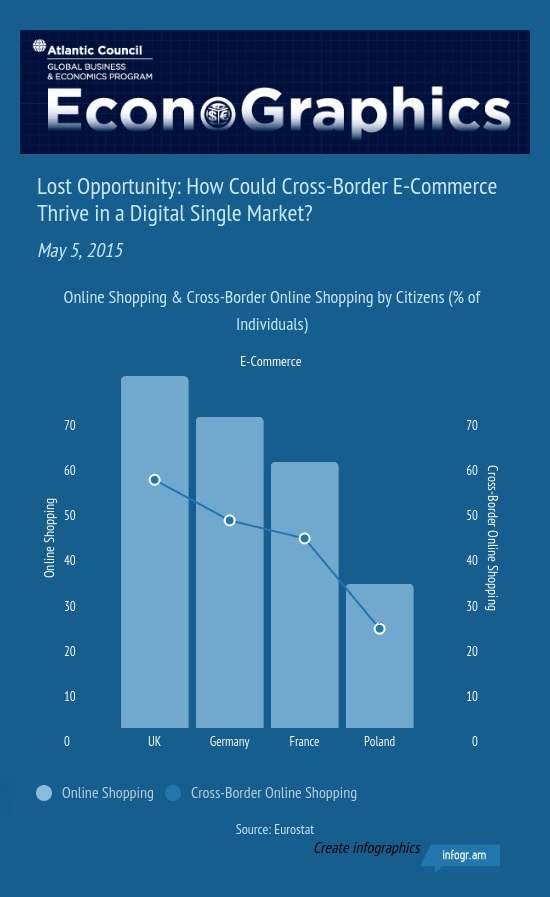European E-Commerce is still largely confined within national borders.

The percentage of online shoppers in the European Union has continued to grow over the last few years, up to more than 10 percentage points over the period of 2009-2013, and reaching 47% of citizens in 2013.
Nevertheless, while cross-border online shopping has also increased over this period, it only increased by 4 percentage points from 2009 to 2013, reaching 12%. E-Commerce, therefore, remains largely walled off by national boundaries.
The Europe 2020 Digital Agenda aiming to make “Every European Digital” has been put forward by EC President Jean-Claude Juncker, who is looking to create a connected digital single market in the European Union. When implemented, the digital single market would enhance interoperability and standards while strengthening online trust and security throughout Europe. Moreover, its completion could generate up to 250 billion euros of additional growth in Europe. However, while the Digital Agenda’s target of 50% of citizens for E-Commerce use is likely to be met by 2015, it is clear that the target of 20% of individuals buying over the internet from other EU countries is unlikely to be met by the same time period.
Please see this op-ed by Ambassador David O’Sullivan, and join us on Wednesday for a discussion about the future of the Transatlantic Digital Marketplace.